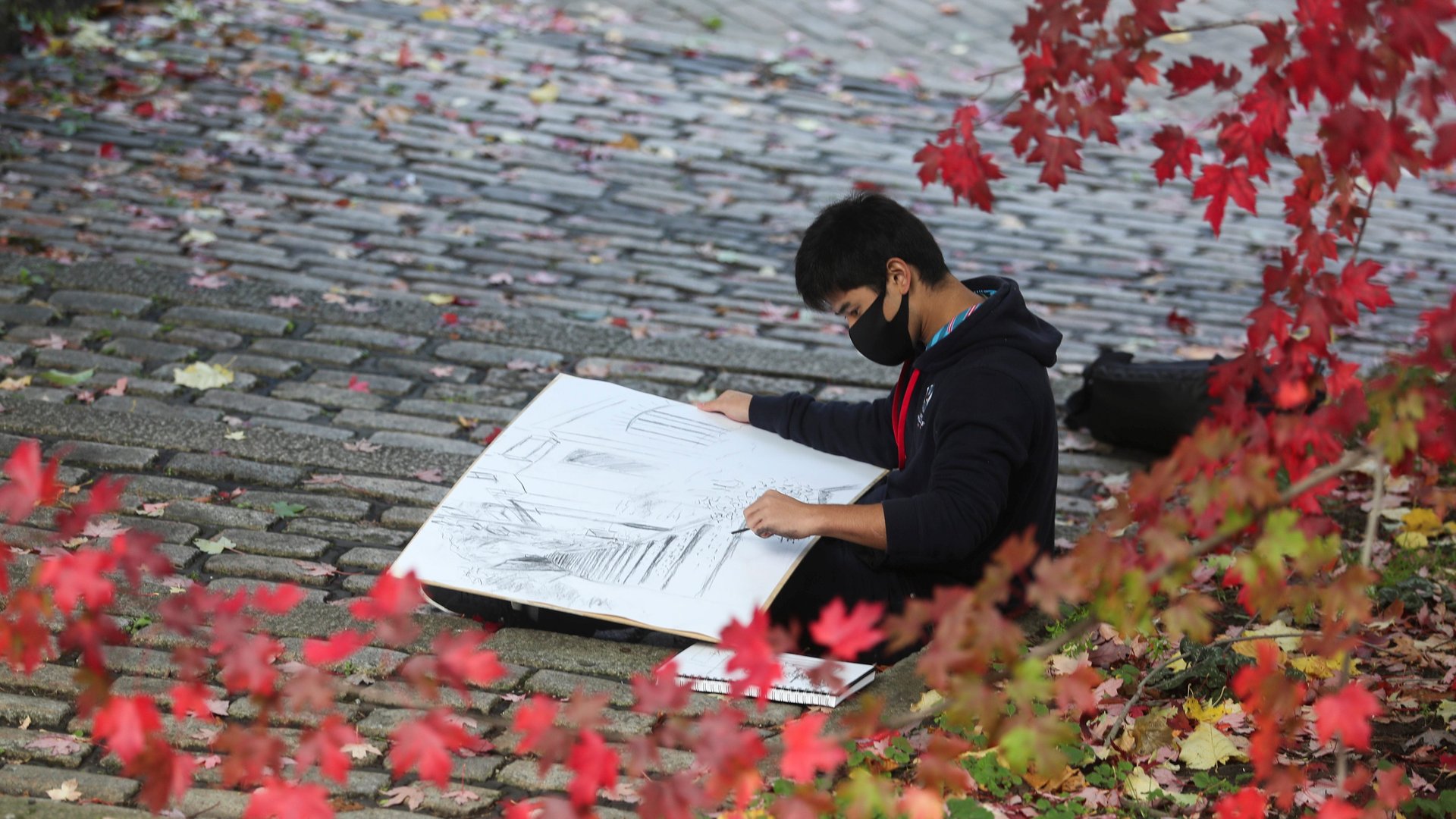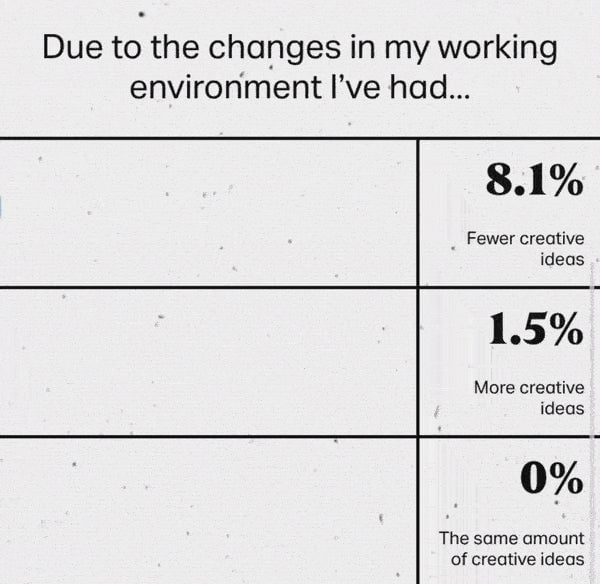Covid-19 has been a boost to creativity, unless you’re a woman
The Covid-19 crisis hits men and women workers differently. It’s a fact we’ve known for a while, attested to by several studies organizations like the United Nations, the World Bank, and McKinsey. Now a new report from WeTransfer, a Dutch file-sharing service, illustrates how that disparity plays out in the creative arts industry.


The Covid-19 crisis hits men and women workers differently. It’s a fact we’ve known for a while, attested to by several studies organizations like the United Nations, the World Bank, and McKinsey. Now a new report from WeTransfer, a Dutch file-sharing service, illustrates how that disparity plays out in the creative arts industry.
Of the 35,000 respondents who participated in WeTransfer’s annual Ideas Report survey, the majority of men said that they were generating more ideas and feeling confident about them compared to last year. Women working in the creative arts, however, don’t share the same optimism. More than half of female respondents said that they felt uncertainty about their careers during the pandemic. And when they came up with a new idea, more than 40% doubted whether they even have the skills to pull it off. The report covers attitudes of workers in the design, music, film, technology, photography, publishing, advertising, marketing, and public relations sector in 183 countries.

The difference in attitudes was dramatized by two speakers at the report’s Dec. 1 launch event.
Asked to reflect on their experience during the pandemic, Ben Hammersley, a British tech consultant, spoke about embracing hardship as a driver for creative breakthroughs. “This year there are more things you can do, more things you can learn to do than you’ve ever been able to do in the past,” he said. “We live in a golden age of tools…and we have to take on harder challenges,” he said citing the Yerkes-Dodson law—a principle that says physiological or mental stress can improve performance. “My mantra for this year, and definitely next year, ‘better people need bigger problems.'”
Natasha Jen, a partner at the design consultancy Pentagram in New York City, on the other hand, confessed to moments when she felt depressed by the compounding stresses of the pandemic, racial upheavals, and economic downturn this year. “The biggest thing for me was realizing how vulnerable the design industry actually is,” Jen said. Ultimately, going back to work was the mental hack that pulled her through. “The activity that kept me sane was radically simple, and maybe a little stupid-sounding,” she offered. “It’s in the act of making that disengaged me from the feeling of helplessness and the feeling that I was a victim of this frozen economy.”
At the same time, Jen explained that 2020 has made her think big picture. She said she’s been reckoning with her role in aiding capitalism and relentless consumerism through her job as a graphic designer and brand consultant for some of the word’s top companies. “We’ve been on this joyride,” she said. “In the face of the pandemic, we have to rethink the direction we’re taking. It’s two contradictory things: I have no problem with my profession as a designer yet I had some sort of awakening about the industry.”
WeTransfer’s findings echo other surveys that suggest women are bearing most of the emotional, social, and economic fallout from Covid-19. In the US, a recent report outlines how millions of working women are adversely impacted by the pandemic because they have to assume childcare duties. The World Bank and the UN warn that Covid-19 will likely deepen economic gender inequality around the world, with an estimated 47 million women and girls pushed into poverty by next year.
“It reinforced a lot of facts on how far the creative industry still has to go in terms of fostering equality,” Holly Fraser, editor of WeTransfer’s editorial platform tells Quartz. “Perhaps it’s not entirely surprising, but it’s worthwhile highlighting. Having it down on paper means people can’t ignore it.”
Fraser adds that she was initially surprised by the wave of creative zeal that persisted throughout this grim year, especially after reading the negative words survey respondents used to encapsulate this year. “A large majority of our 35,000 respondents came back with words that were almost too rude to print,” she writes in the report. “Hint, most rhymed with ‘ducked’.”
That surge of inventiveness follows what’s happened in past upheavals throughout history, Fraser observes. “Moments of hardship have often led to creative renaissance. Following the 1918 pandemic came the Roaring Twenties. Surrealism, Art Deco, and the works of authors like Scott F. Fitzgerald and Ernest Hemingway had their genesis during this time,” she writes. “We’re often taught that in order to think clearly and efficiently we should eradicate our emotions and not let them get in the way of decision making. And while that works in certain situations, there is more and more research to suggest that harnessing emotions—particularly negative ones like anger or frustration—can motivate us to work more effectively.”

It’s not just design professionals. Making something has also been a source of extra cash, especially for those who lost jobs during the pandemic. Etsy, for instance. revealed that over 100,000 sellers have made $346 million from sales of homemade face masks this year. Similarly, Spotify reports out-of-work musicians are making ends meet by peddling a range of creative merchandise, from rock band staples like T-shirts to new products like mustard, cologne, and coffee.